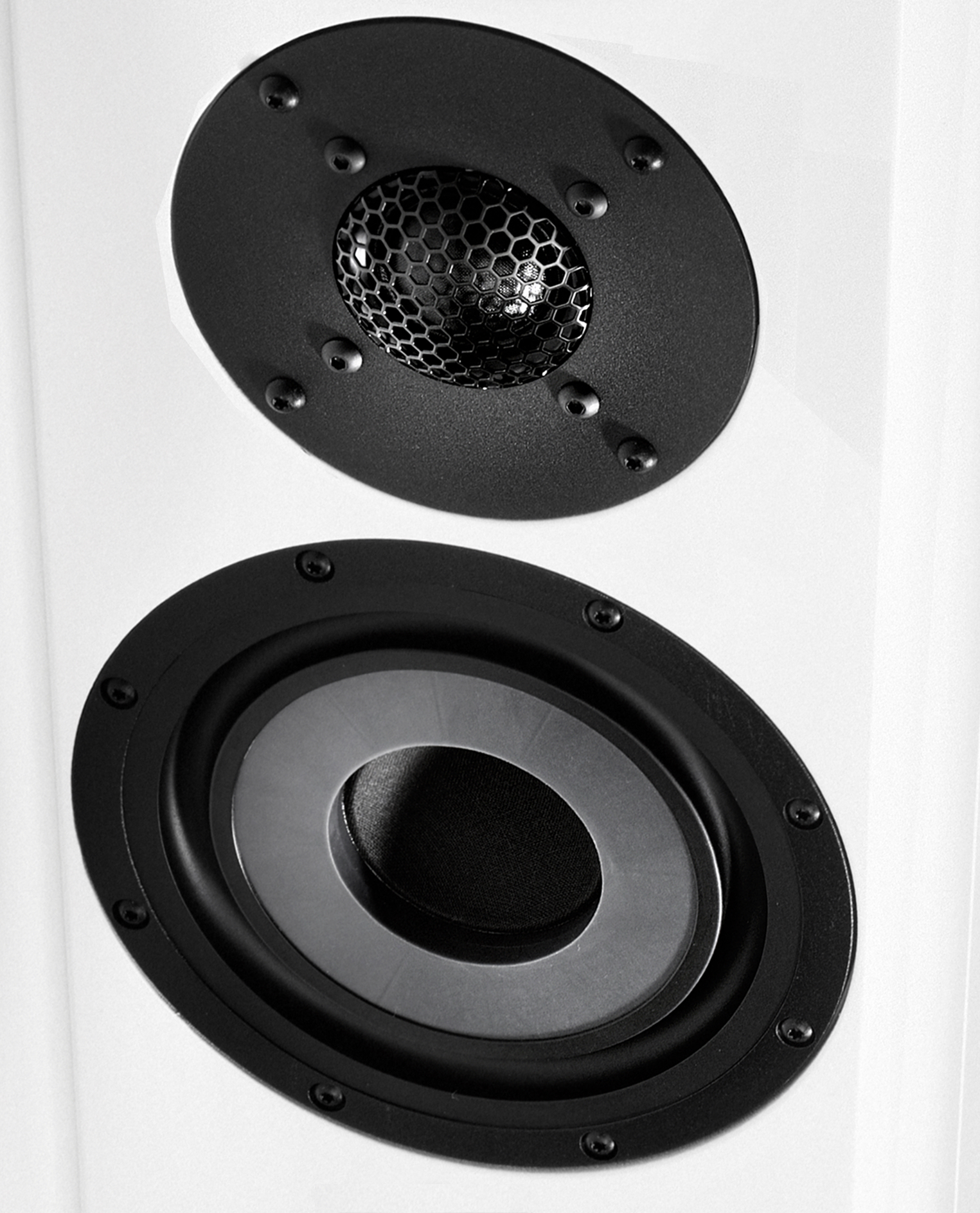
More recently, we saw the introduction of the clever (and wonderfully natural sounding) Composite Cone drivers. These used a mixed material construction to combine a flat diaphragm with a large, inverted central dome – to considerable musical effect. Forget pleated paper lamination, ‘deep’ ceramics and nano particles, here were drivers that were as unique as they were impressive as they were astonishingly cost-effective. Hyperbole? The Beethoven Concert Grand is a surprisingly large speaker for its €12K price-tag. What’s more surprising is that each pair contains a total of six Composite Cone bass drivers and two Composite Cone midrange units. This is value engineering in every sense of those two words.
But as impressive as those achievements are, they are as nothing when compared to the significance of Vienna’s latest (and quite possibly, greatest) creation – the Mozart Infinity, a product that is, despite appearances, more than just a speaker system. It’s actually a complete, neat and extremely accomplished AUDIO system!
Mozart by name – Mozart by nature…
On paper, the recipe for success should be simple: build an active speaker, add a streaming front end and DSP crossover and away you go. Except for all the countless companies who’ve tried it, few if any have succeeded. Perhaps the earliest and most ambitious attempt was the Meridian DSP5000. Since then, many have tried and most have failed, perhaps the most high-profile disaster arriving in the vaguely aquatic shape of Devialet’s Phantom, a product that’s just way too loud, in every possible way, from the stridently preposterous marketing to the nauseating sound quality – generally demonstrated at gut-churning levels. The goal of a simple, versatile and domestically acceptable sound system that actually manages to sound respectable too has, for way too long proved well out of reach. Except that Vienna Acoustics haven’t just hit a home-run, in the case of the Mozart Infinity, they’ve knocked it clear out of the park. Perhaps unsurprisingly, they’ve done so by choosing a distinctive and distinctly different approach.
Mozart has long been the moniker for the company’s smallest floorstander, evolving through multiple iterations while retaining the same essential size, shape and attractive proportions. Standing 39” tall, a little over 6” wide and a little under 12” deep, it’s housed in a classically slim cabinet, small enough to fit into any room, large enough to generate satisfying bass depth and weight. Each cabinet houses a pair of the company’s flat diaphragm, composite cone drivers and a large diameter ScanSpeak-sourced, silk-dome tweeter, in a two-and-a-half way, reflex loaded topology. The Infinity model takes the Mozart and adds all the bits and pieces necessary to make it into an all-singing, all-dancing, two-box, ‘source-plus’ system. But the secret of its success lies in the bits chosen and (especially) the way in which they’ve been pieced together. ‘No compromise’ might seem like a strange phrase to use about a €12,490 (inc 20% sales tax) audio system, but the reason the Mozart Infinity works where the competition simply doesn’t lies in the fact that VA designer Peter Gansterer was simply not prepared to dilute the essential musical integrity of the passive Mozart. That mandated an almost obsessive search for electronic elements that didn’t just sound right but were consistent enough in quality and stable enough in use to offer genuinely deliverable performance.

